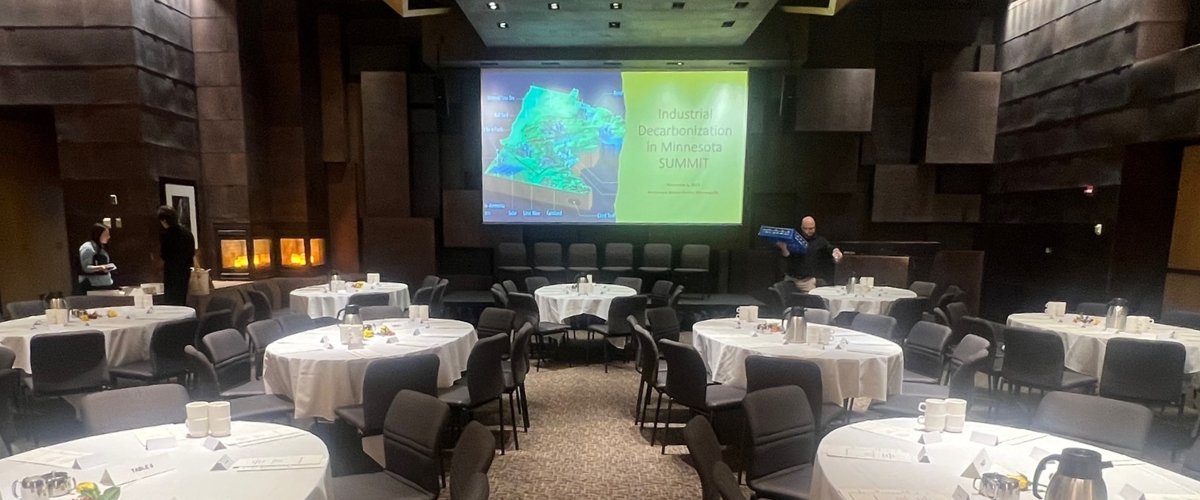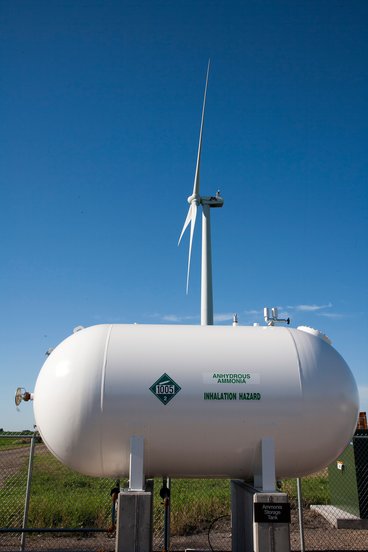
Catalyzing a transition to clean energy in Minnesota’s industries

On November 1, the University of Minnesota co-hosted an Industrial Decarbonization in Minnesota Summit at McNamara Alumni Center; the event was also co-hosted jointly by National Renewable Energy Lab, Great Plains Institute, and the State of Minnesota. The event was designed to catalyze efforts to decarbonize—reduce the emission of carbon dioxide—and grow new industries in Minnesota. The summit was attended by more than 100 leaders in clean energy industries, academia, non-profit organizations, and public officials at the county, state, and national levels.
The summit centered around four major industries that have the potential to be transformed by clean energy: nitrogen fertilizer production, iron and steel production, the production of non-fossil fuels (e-fuels), and cement and concrete production.
Minnesota’s investment in wind and solar energy positions the state to further switch to renewable energy sources, like clean (or green) hydrogen. Hydrogen gas, produced from water through a process called “electrolysis,” can be a clean fuel when the electricity used in its production is renewable. The event comes a few weeks after the Biden-Harris administration announced the funding of seven regional clean hydrogen hubs throughout the country.
A model for decarbonization in agriculture

Mike Reese, Renewable Energy Director at the University of Minnesota’s West Central Research and Outreach Center (WCROC) in Morris, was one of the organizers of the summit, and he presented a “lightning talk” on reducing the carbon footprint of the agriculture industry through “green ammonia” and fertilizer at the summit.
Inspired by Morris’ rich agricultural lands and the promise of clean hydrogen, the team at WCROC has been researching the production of nitrogen fertilizer—anhydrous ammonia—from hydrogen gas and nitrogen gas, powered by wind energy. The research team envisioned a model “in which farmers could utilize wind energy that blows across their land to create a value-added nitrogen fertilizer source which can then be applied back to fields to nourish their crops,” according to a WCROC white paper.
The renewable energy program at WCROC has been actively researching the potential of wind energy to produce clean hydrogen since 2005, when a utility scale wind turbine was constructed on the site; funding from Minnesota’s Legislative Citizens Commission on Minnesota Resources (LCCMR) allowed the team to pursue this research.
Generating momentum
The summit organizers made the point, through their curation of the agenda and the attendees, that decarbonization in one industry can benefit other industries through a process called “sector coupling,” and renewable energy is the engine that drives the change. “In many respects, the use of the green hydrogen in the production of nitrogen fertilizer is a gateway for other industrial uses of green hydrogen,” said Reese.
“The summit was overwhelmingly well received and generated considerable excitement and enthusiasm,” said Reese. According to Reese, the U of M is taking the lead on following up on the discussions and ideas generated by the summit.





